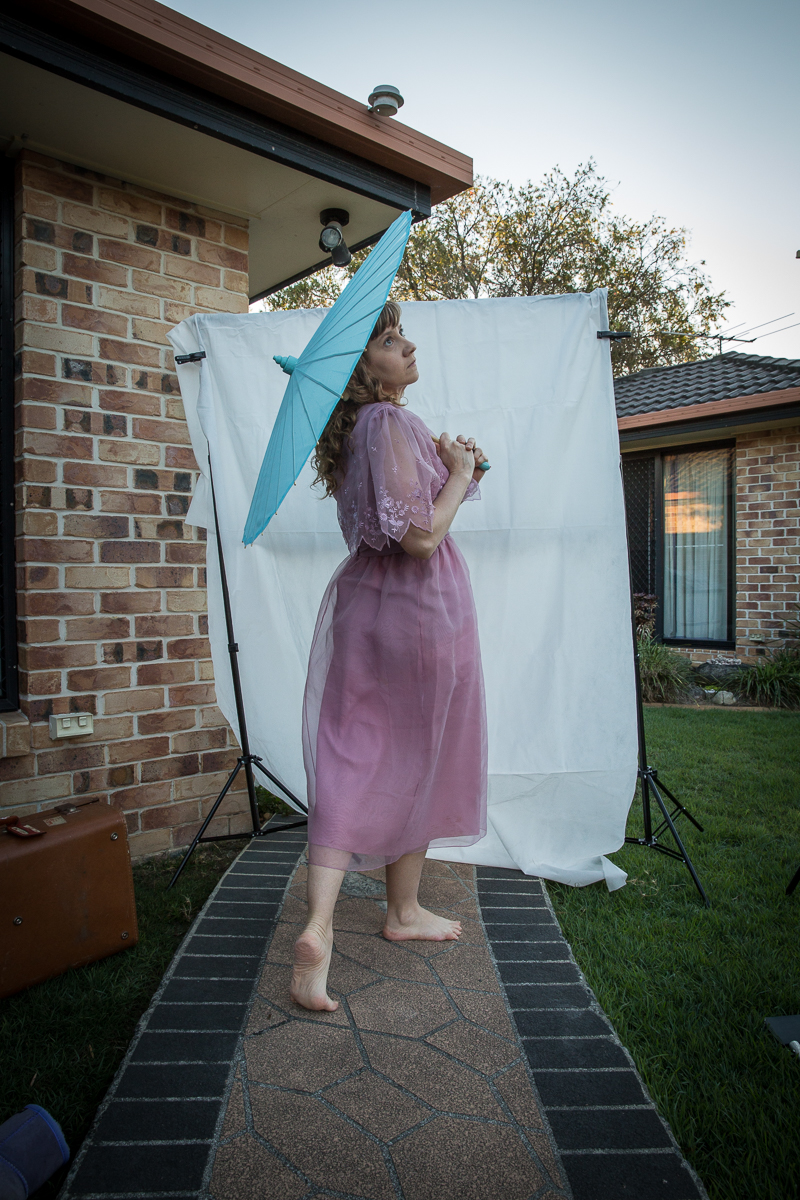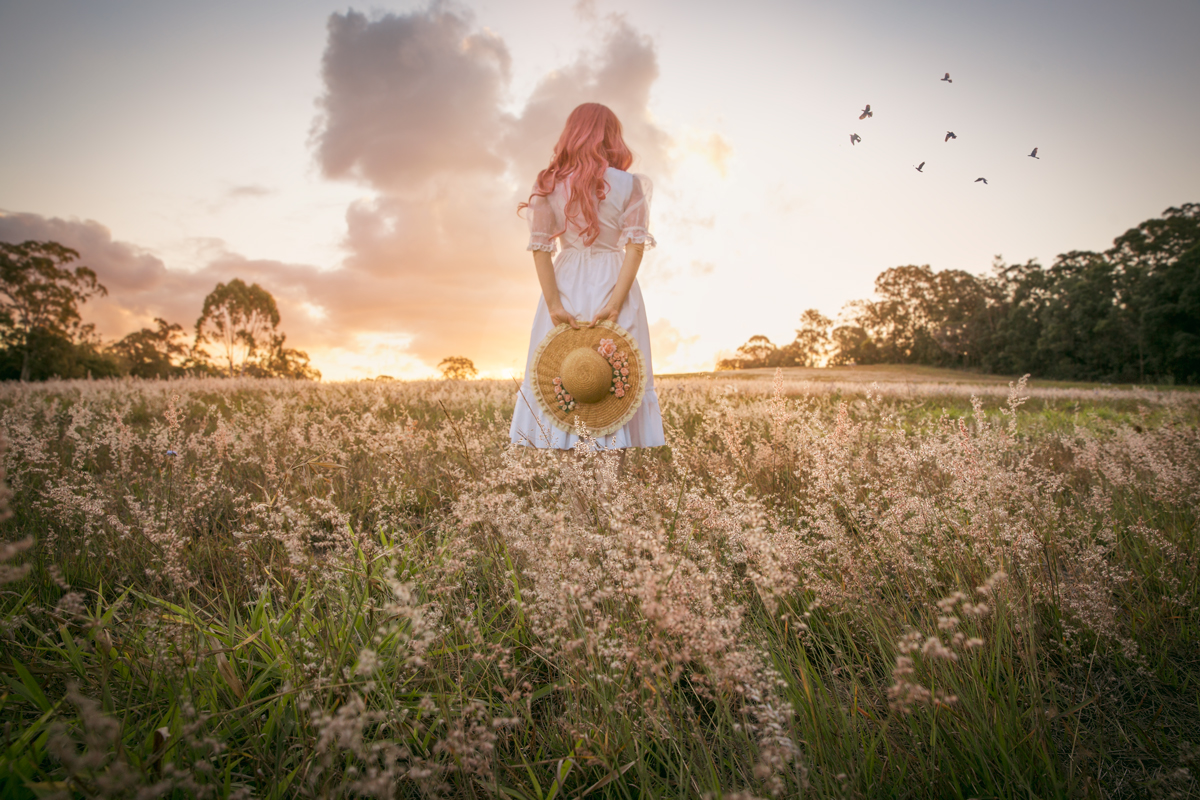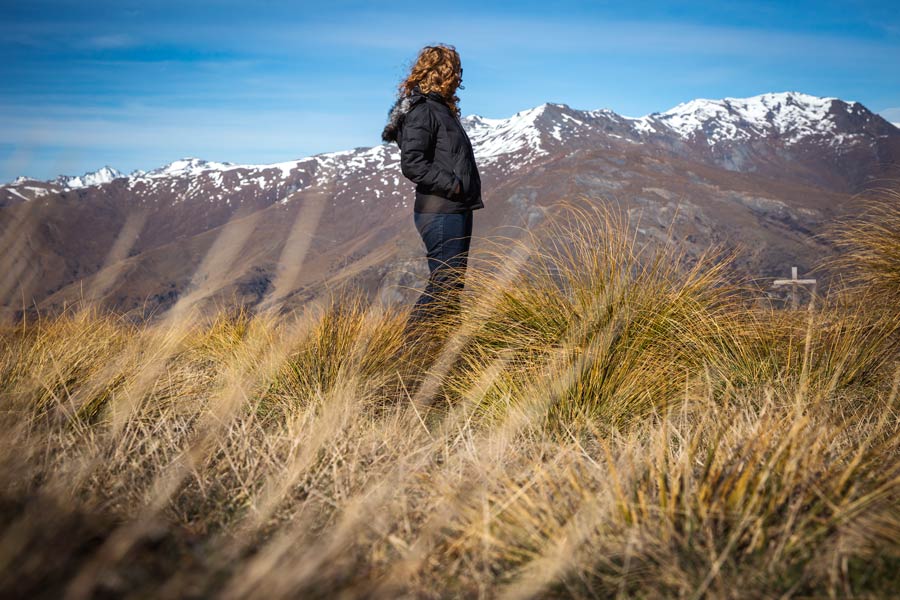
The world is full of interesting subjects to photograph so why on earth would you turn the camera on yourself? Today I’m talking about why self-portraiture is one of the best things I’ve done for my photography and my self-confidence.
From my teens to my 30s I did whatever it took to avoid being on camera, purposely sabotaging the photo by making stupid faces if I was forced to be. I’ve always hated being photographed because when you grapple with self-confidence it’s confronting to see yourself immortalised in print, particularly if you’ve been snapped off guard not looking your best. These days while the likelihood of your happy snaps making it to print is a little rarer, the threat of them being posted on social media for all to see until the end of time is still equally horrifying. Many of us have never taken the time to figure out how to pose for our particular features so it’s understandable that we’re often unhappy with the results.
So how did I become a self-portraitist?
It started, really, out of necessity. Shooting random subjects around my local area had started to bore me and I was searching for something more directed and meaningful, trying different genres on for size to see if anything would stick. Through this process I discovered conceptual photography, and in particular, the art of using photography and Photoshop to tell stories. I’d always enjoyed reading and telling stories and so was fascinated by the potential of using photography to tell stories visually. The big problem being that this kind of imagery often featured a person as the main character and vessel for the story playing out and I had no one I could photograph. No children, no willing friends, and even if I did it felt way too much of an ask to expect someone to share their time when there was no guarantee I could even deliver an accomplished result, particularly in the early days when I had no portfolio to share and didn’t really know what I was doing yet. Looking back I’m sure there were people I could have asked who’d have been more than happy to help, but these are the excuses we tell ourselves.
The wonderful thing about conceptual photography is that many of the photographers in this field use themselves as models. I was raised in the magazine generation where only conventionally beautiful people were apparently deserving of camera time, but even then you’d often see those same people being vilified whenever they didn’t look their best which wasn’t great for any woman’s confidence. So it was wonderfully refreshing and empowering to see photographs of people who weren’t the standard of beauty I was used to. Even though it’s only 8 years later, this kind of thinking seems almost strange now with social media entirely changing how beauty is portrayed, as the millennial generation who’ve been raised on camera, confidently sharing their best and worst all over social media.
This really broken down a lot of my resistance to being on camera and because my goal of wanting to try this style of photography was bigger than my fear of being on camera I was able to overpower anything my ego had to say about the matter. And it’s just so convenient to be able to dream up a concept and photograph it immediately without it becoming a big production with much higher stakes. I can easily photograph myself in my backyard without having to search for a willing model, discuss payment, consider make up and costume, find a location, pray for the right conditions and hope that the concept works out.

The first time I exhibited my photographs in a gallery I happened to be there the moment the director realised my work was all self-portraits and she was like ‘Whoah, that’s so interesting thematically. What does that say about you.’ All it really said is that I choose convenience over working with others. Nothing deep and meaningful in that I don’t think. Or is there?
The best part is, showing your face is not a requirement in self-portraiture. In fact, for the kind of work I do it’s best not to show facial features because if someone buys a print of your work they often prefer a non-descript character that they can draw their own conclusions about rather than someone that’s identifiable. You can do this by turning your back to camera, wearing wigs or costumes or hiding or cropping out portions of your body.

Why I recommend everyone try self-portraiture:
Firstly, using self-portraiture teaches you how to pose. Not just yourself. But others too. It teaches you what looks good and what doesn’t and how to be stronger at giving direction. You’ll learn what poses hurt and why you shouldn’t expect a model to hold certain poses for too long. You’ll also realise how important it is, when working with models, to regularly show them their photos so they can adjust their poses accordingly. It’s so unnerving to have no idea what you look like and whether your poses look natural. Knowing all this made me less fearful to work with models, and the more I work with them, the more comfortable I’ve become working with others.
Secondly, when I’m photographing landscapes or scenery while travelling I often like to include a person to create a stronger story and it’s just easiest to do this myself so I can position and pose myself for whatever I want to convey. Sometimes I carry a light tripod for this purpose but I also often wedge my camera into rocks. These images are great for social media or stock photography and I’ve done this enough times now that I can easily set up and shoot several variations in just a couple of minutes.
Thirdly, it’s a handy skill to have and adds more variety to your shots. There will definitely come a time when you want to try out a new concept but there’s no one around to help you or where you need to pop out from behind the camera to help a model pose or flick a dress to add some movement and it’s times like these that being confident with triggering a camera remotely means your options aren’t limited. Think about how much more interesting a photo of the Milky Way is when you include someone in the photo.
Fourthly, if you run a business, which you very likely do as a photographer, then it’s important to build trust on social media by sharing photos of yourself. People want to connect with you and your story not a faceless company and it’s wonderful to be able to shoot your own behind the scenes or branding photos without having to pay for someone else’s services. And even in a personal sense, it’s much nicer to have photos of your family that you are actually in, rather than missing whoever it is that’s been tasked with taking the photo. Too often the photographer of the family comes home from a trip to discover they don’t have a single photo of themselves and photos of landscapes don’t convey the same kind of memory.
Fifthly, I have the most fun when I’m shooting self-portraits. It’s very entertaining to play dress ups and become a character. I was never good at acting but I just love the feeling of being someone other than myself for a little while, doing things I would never normally do in my day to day life. You certainly won’t be bored.
Just recently I was asked to house-sit for a friend and she has this gorgeous cabin that’s beautifully styled, yet taking photos of the décor seemed kind of pointless because there’s no real use for images like that. So instead, I made the most of this styling by taking a series of self-portraits to use on social media and within my business which gave life to this environment while tandemly providing a really interesting backdrop to my portraits.
In a personal sense self-portraiture has vastly improved my confidence. Having sold several prints of images that I feature in has shown me that the way I look matters less to other people than it does to me. I now know my best poses and angles and listen to my ego less, especially knowing that all of us can look terrible with the wrong pose, wrong lens or wrong light, just as we can all look beautiful in the right conditions. It’s helped me accept who I am and stop being so critical of my perceived faults.
Self-portraits can be incredibly powerful, especially when we intentionally draw attention to the features we dislike the most or the disabilities that affect our lives. It gives you a way to tell your story and deconstruct your challenges in a really vulnerable and personal way which people find fascinating. It’s much easier to share your story thematically than with words, especially when it results in beautiful thought-provoking artwork.
But self-portraiture can certainly seem daunting until someone breaks down the process for you. It adds an extra challenge to the way you work, but it does so in a fun way that I personally love.
You will need a tripod or sturdy and safe surface to hold your camera although don’t let that hold you back. There is a photographer, Miss Aniela, who used to take self-portraits by placing her camera on the ground and this low angle actually became part of her initial personal style.
You’ll also need some way to trigger your camera. I use a variety of remotes depending on what I’m shooting. For instance I use a cheap short range remote when I’m close to camera, then I have one that can be triggered from a much longer distance for travel portraits, and for times I can’t hold a remote I use an intervalometer that shoots in repetitive intervals. You also have the cheaper but less convenient option of your camera’s 2 or 10 second built in timer. I did reach a point of frustration not too long ago where I wanted a more accurate way of focusing, so I upgraded to the Canon R6 for the specific purpose of being able to focus and trigger the camera using an app, but it turns out, I don’t like the way the app functions at all – it’s buggy and unreliable and so I have gone back to using my 5D Mark III because I know how to work with it comfortably, but that’s just me being stuck in my ways. If you have access to an app that works with your camera you may find a way to get that to work for you.
The most challenging part of self-portraiture is getting the focus right. I recommend using a narrower aperture when you’re just starting out combined with a mid-range to wide angle lens so you’ve got a better chance of getting everything in focus. So the camera is not refocusing each time I use back button or manual focus. I teach more about the specifics of this within Creative Photo Folk, my photography membership.
It also takes much longer to get the shot right when you’re more focused on being in front of the camera than directing what’s happening from behind it. Sometimes I get the lighting wrong. Sometimes the focus is off. Sometimes my pose is from the wrong perspective or doesn’t accurately convey what I want to capture. Sometimes I accidentally cut myself out of the scene entirely. It can also be a pain in the arse, quite literally, to run back and forth to the camera checking your posing and framing continually, especially if you’re needing to get up and down from a seated or lying pose. My thighs often hurt for days after a self-portrait shoot.
Self-portraits also require a lot of shooting and patience. While you might nail a model portrait within 30 shots, I can take anywhere between 80 to 400 photos of just one concept to get the pose and all the other components right. But they’re usually pretty easy to cull because you know better than anyone whether you’re happy with how you look and if your pose and expression suitably convey the story you wish to tell.
As well as giving self-portraiture a go, I also recommend posing for someone else occasionally. Putting yourself on the other side of the lens teaches you a lot about the particular challenges that models face so that you can be a more considerate photographer. It’s also quite enlightening to experience the directing process first hand that other photographers use.
Most of all just remember to have fun. Like me you might be surprised by how entertaining it is to photograph yourself and if you’re uncomfortable in front of a camera this is absolutely the best way to take control of how you want to be portrayed.



